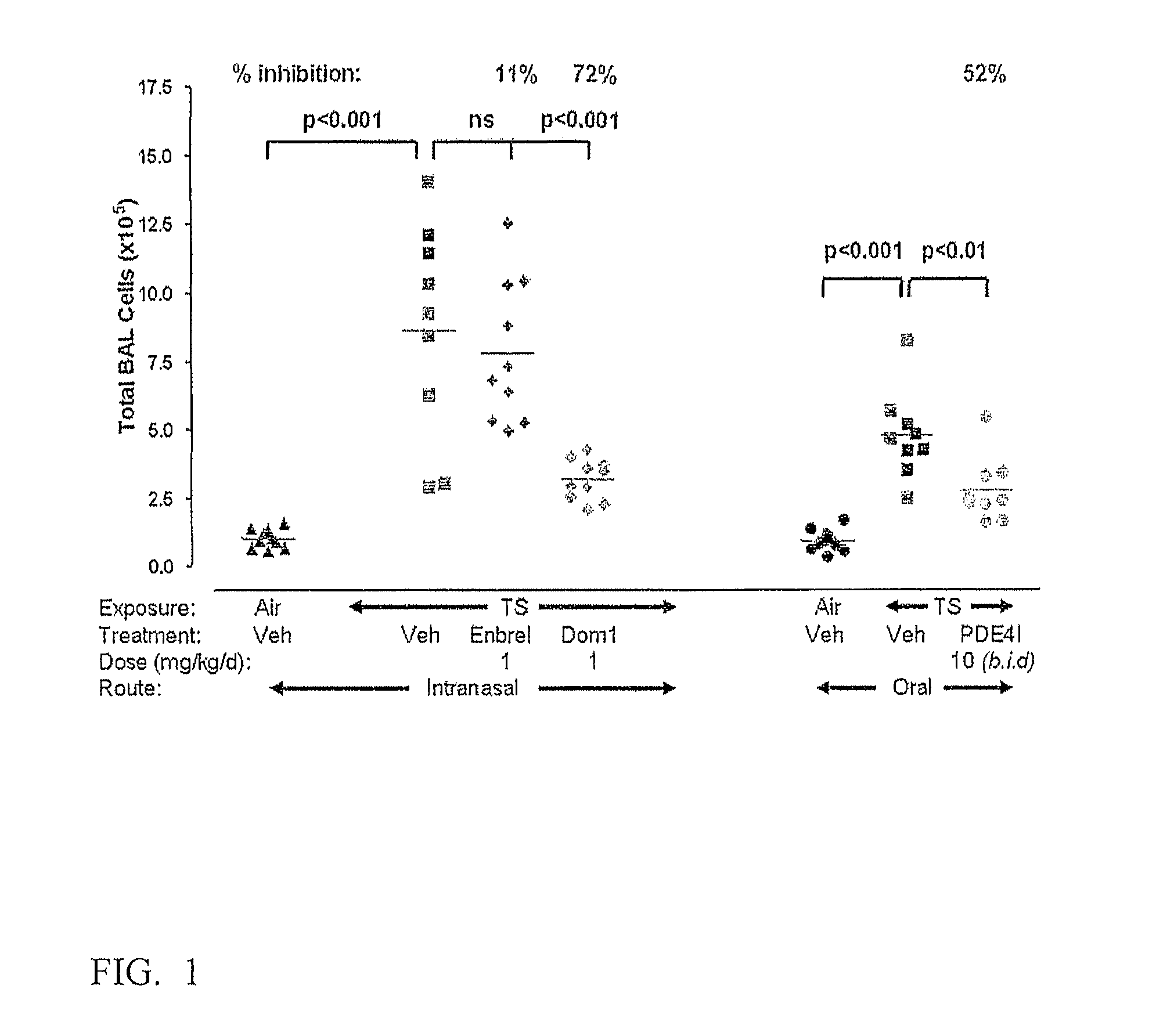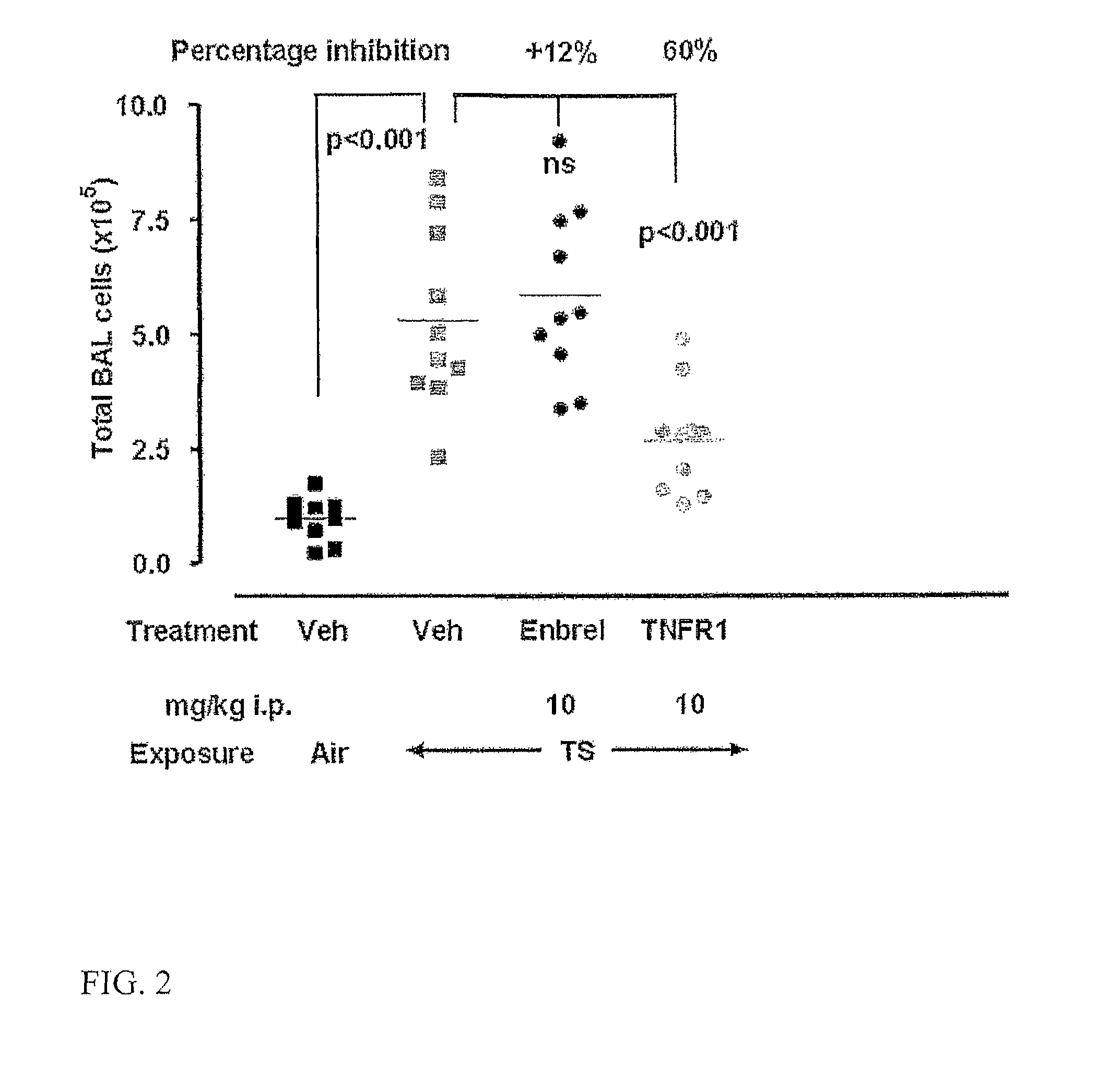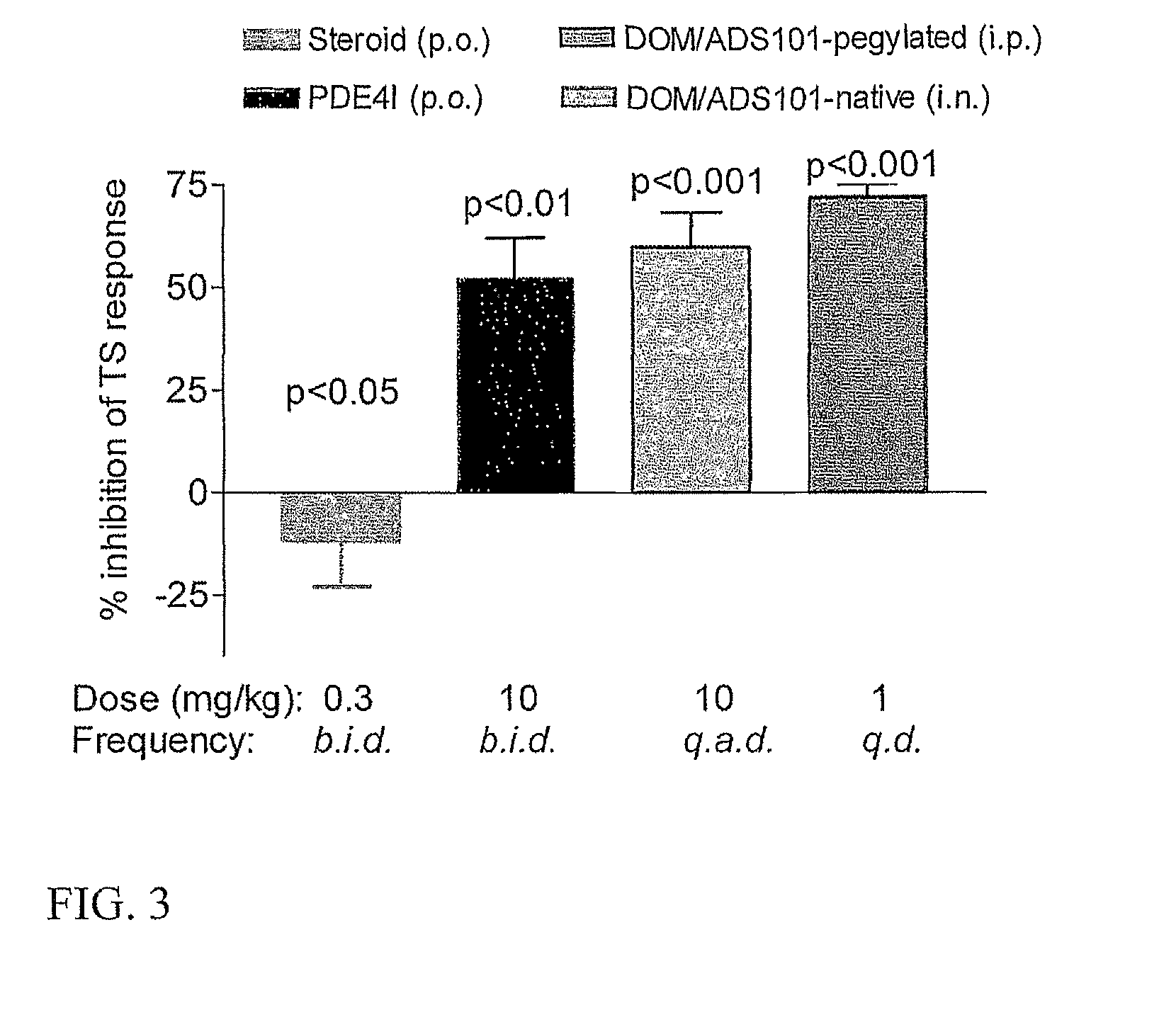Agents that bind a target in pulmonary tissue for targeting respiratory diseases
a technology of pulmonary tissue and agents, which is applied in the direction of antibody medical ingredients, drug compositions, immunological disorders, etc., can solve the problems of inability to use many agents with therapeutic or diagnostic potential in vivo, short in vivo serum half-lives, and inability to penetrate tissues or organs to produce a desired therapeutic or diagnostic effect at a desired location
- Summary
- Abstract
- Description
- Claims
- Application Information
AI Technical Summary
Problems solved by technology
Method used
Image
Examples
example 1
Antagonist of TNFR1 Locally Administered to Pulmonary Tissue is Efficacious in a Subchronic Model of COPD in C57BL / 6 Mice
[0309]In this study, an antagonist of TNFR1 (anti-TNFR1 dAb monomer (TAR2 m21-23)) and an antagonist of TNF (ENBREL® (etanercept; Immunex Corporation)) were administered locally to the lung by intranasal administration 1 hour prior to each air or tobacco smoke (TS) exposure. The effects on TS-induced changes in pulmonary inflammatory indices induced by 11 consecutive daily TS exposures were examined 24 hours following the final exposure. The anti-TNF compound (ENBREL® (etanercept; Immunex Corporation)) was used as a control. An orally administered phosphodiesterase 4 (PDE4) inhibitor (BAY 19-8004; lirimilast) was also administered 1 hour prior to and 6 hours post TS exposure in another group as a reference.
Methods
[0310]Test Substance 1: EMBREL® (etanercept; Immunex Corporation)
[0311]Test Substance 2: DOM1M (anti-TNFR1 dAb monomer (TAR2m21-23))
[0312]Test Substance ...
example 2
Antagonist of TNFR1 Systemically Administered is Efficacious in a Subchronic Model of COPD in C57BL / 6 Mice
[0326]In this study, an antagonist of TNFR1 (Pegylated anti-TNFR1 dAb monomer (TAR2m21-23 PEGylated to increase hydrodynamic size and in vivo serum half-life)) and an antagonist of TNF (ENBREL® (etanercept; Immunex Corporation)) were administered systemically by intraperitoneal administration every 48 hours beginning 24 hours prior to the initial TS exposure. The effects on TS-induced changes in pulmonary inflammatory indices induced by 11 consecutive daily TS exposures were examined 24 h following the final exposure. The anti-TNF compound (ENBREL® (etanercept; Immunex Corporation)) was used as a control.
Methods
[0327]Test Substance 1: ENBREL® (etanercept; Immunex Corporation)
[0328]Test Substance 2: PEG DOM1M (anti-TNFR1 dAb monomer (TAR2m21-23) PEGylated with a 40 kDa polyethyleneglycol to increase hydrodynamic size and lengthen in vivo serum half-life).
[0329]The vehicle for bot...
example 3
Pharmacokinetics of Agent that Binds TNFR1 after Local Administration to Pulmonary Tissue
[0336]In this study, an agent that binds TNFR1 (anti-TNFR1 dAb monomer (TAR2m21-23)) was administered locally to the lung by intranasal administration and pharmacokinetics of the agent were evaluated.
Methods
[0337]DOM1m (anti-TNFR1 dAb monomer (TAR2m21-23)) in 20 mM sodium citrate pH6.0, 100 mM NaCl was used in the study. The diluting agent was sodium citrate pH6.0, 100 mM NaCl.
Protocols
[0338]All animals were administered DOM1m by intranasal administration on the same day within 1 to 2 hours of warming the solution.
[0339]Female mice (C57BL / 6) full barrier bred and certified free of specific microorganisms on receipt (16-20 g) (Charles River) were housed in groups of up to 5 in individually ventilated, solid bottomed cages (IVC) with Aspen chip bedding. Environments (airflow, temperature and humidity) within the cages were controlled by the IVC system (Techniplast).
[0340]
No. Groups:5Group Size:3Do...
PUM
 Login to View More
Login to View More Abstract
Description
Claims
Application Information
 Login to View More
Login to View More - R&D
- Intellectual Property
- Life Sciences
- Materials
- Tech Scout
- Unparalleled Data Quality
- Higher Quality Content
- 60% Fewer Hallucinations
Browse by: Latest US Patents, China's latest patents, Technical Efficacy Thesaurus, Application Domain, Technology Topic, Popular Technical Reports.
© 2025 PatSnap. All rights reserved.Legal|Privacy policy|Modern Slavery Act Transparency Statement|Sitemap|About US| Contact US: help@patsnap.com



